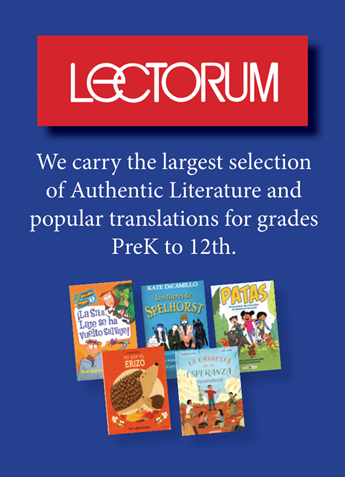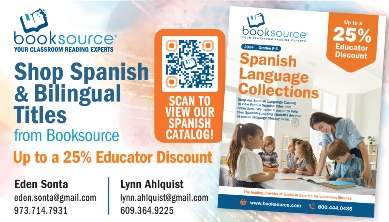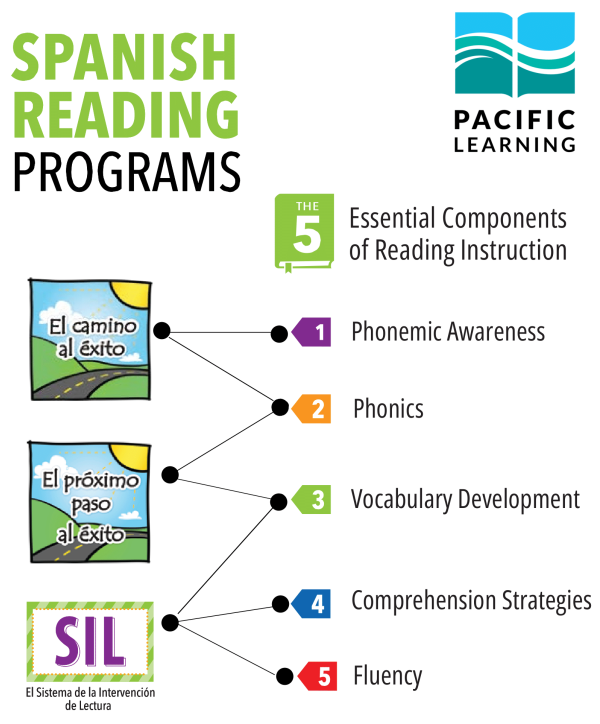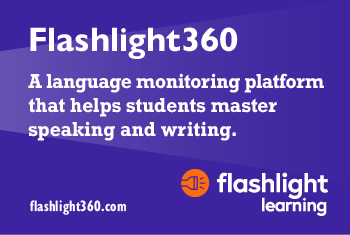References:
Abedi, E. A., & Ackah-Jnr, F. (2023). First-order barriers still matter in teachers’ use of technology: An Exploratory study of multi-stakeholder perspectives of technology integration barriers. International Journal of Education and Development using Information and Communication Technology, 19(2), 148-165. https://files.eric.ed.gov/fulltext/EJ1402796.pdf
Anderson, K. M., Haynes, J. D., Wilson, C. J., & Conner, N. E. (2023). Creating safe classroom learning spaces for students living in urban areas of poverty. School Community Journal, 32(2), 177-204. Retrieved from https://www.adi.org/journal/2022fw/AndersonEtAlFW22.pdf
Arechederra, Charlotte (2023) “Shifting Presentation: How Nonbinary College Students Respond to Deadnaming and Misgendering,” PANDION: The Osprey Journal of Research and Ideas: Vol. 4: No. 1, Article 16.
Baker, B. D., Weber, M., & Atchison, D. (2020). Weathering the storm: School funding in the COVID-19 era. The Phi Delta Kappan, 102(1), 8–13. https://www.jstor.org/stable/26977134
Britt, L. L., Ball, T. C., Whitfield, T. S., & Chang, W. W. (2022). Students’ Perception of the Classroom Environment: A Comparison between Innovative and Traditional Classrooms. Journal of the Scholarship of Teaching and Learning,22(1) https://doi.org/10.14434/josotl.v22i1.30735
Casanova, D., Huet, I., & Garcia, F. (2023). The Experience of Co-Designing a Learning Space with Teachers and Students. Education Sciences, 13(2), 103. https://doi.org/10.3390/educsci13020103
Douma, K. (2021, May 4). Boosting young students’ emotional vocabulary. Edutopia. https://www.edutopia.org/article/boosting-young-students-emotional-vocabulary/
Dzaldov, B. S., & Mandelker, J. (2023). MAKING A DIFFERENCE THROUGH DIFFERENTIATED INSTRUCTION: INCLUSIVE STRATEGIES FOR DIFFERENTIATED INSTRUCTION IN THE MATH CLASSROOM. Gazette – Ontario Association for Mathematics, 61(4), 43-48. Retrieved from https://ezproxy.monmouth.edu/login?url=https://www.proquest.com/scholarly-journals/m aking-difference-through-differentiated/docview/2822802192/se-2
Gardner, H. (1991). The unschooled mind: How children think and how schools should teach. Basic Books/Hachette Book Group.
Gardner, H. E. (2011a). Frames of mind: The Theory of Multiple Intelligences. Hachette UK.
Gleason, S. C., & Gerzon, N. (2013). Growing into Equity: Professional Learning and Personalization in High-Achieving Schools. https://doi.org/10.4135/9781452287607
Hanna, R., Tiina, K., & Kai, H. (2021). The design of learning spaces matters: perceived impact of the deskless school on learning and teaching. Learning Environments Research, 24(3), 339-354.
doi: https://doi.org/10.1007/s10984-020-09345-8
Kansman, J., Mabry, M., Morrison, A., Rosbach, S., & Siegel, M. A. (2022). Intentionally addressing equity in the classroom: An initial look at inclusive practices in major and nonmajor courses in biology and geology. Journal of College Science Teaching, 52(2), 68-79. Retrieved from
https://ezproxy.monmouth.edu/login?url=https://www.proquest.com/scholarly-journals/in tentionally-addressing-equity-classroom-initial/docview/2866115029/se-2
Keaton, S. A., Bodie, G. D., & Keteyian, R. V. (2015). Relational listening goals influence how people report talking about problems. Communication Quarterly, 63(4), 480–494. https://doi.org/10.1080/01463373.2015.1062407
Kim, H. J., Kong, Y., & Tirotta-Esposito, R. (2023). Promoting diversity, equity, and inclusion: An examination of diversity-infused faculty professional development programs. Journal of Higher Education Theory and Practice, 23(11), 138-153. Retrieved from https://ezproxy.monmouth.edu/login?url=https://www.proquest.com/scholarly-journals/pr omoting-diversity-equity-inclusion-examination/docview/2842084398/se-2
Landsman, J. (2006). Bearers of hope: Helping struggling students. Educational Leadership, 63(5), 26–32.
Langreo, L. (2023, July 7). Google Executive: AI could “Transform” school into a “Personal Learning Experience.” Education Week.
Levine, R. S., Lim, R. J., & Amy, V. B. (2023). Social and emotional learning during pandemic-related remote and hybrid instruction: Teacher strategies in response to trauma. Education Sciences, 13(4), 411. doi:https://doi.org/10.3390/educsci13040411
Lobb, H. (2020). A student-centred approach to teaching. Agora, 55(2), 23-25. Retrieved from https://ezproxy.monmouth.edu/login?url=https://www.proquest.com/scholarly-journals/st udent-centred-approach-teaching/docview/2599638914/se-2
Mermelstein, A. D. (2023). Three dynamic methods of assessing the reading comprehension of ESL/EFL learners. ORTESOL Journal, 40, 35-45. Retrieved from https://ezproxy.monmouth.edu/login?url=https://www.proquest.com/scholarly-journals/three-dynamic-methods-assessing-reading/docview/2841555593/se-2
Morales, D. (2016, August 3). ‘My Name, My Identity’ campaign stresses cultural awareness. San Jose Inside.
https://www.sanjoseinside.com/news/my-name-my-identity-campaign-stresses-cultural-awareness/
Nganga, L., Kambutu, J., Scull, R., & Han, K. T. (2021). High school students of color in the U.S. speak about their educational experiences: Schooling, culture and pedagogy. Journal of Social Studies Education Research, 12(3), 1-27.
Patterson, N. (2004). ESL resources online: Making good connections. Voices from the Middle, 11(4), 54-55. Retrieved from https://ezproxy.monmouth.edu/login?url=https://www.proquest.com/scholarly-journals/es l-resources-online-making-good-connections/docview/213932157/se-2
Rodriguez, R. (2017). In Lady Liberty’s Shadow. The Politics Of Race And Immigration In New Jersey. New Brunswick [New Jersey]: Rutgers University Press.
Schwarzer, David & Haywood, Alexia & Lorenzen, Charla. (2003). Fostering Multiliteracy in a Linguistically Diverse Classroom. Language Arts. 80. 453-60.
Semchuk, J. C., McCullough, S. L., Lever, N. A., Gotham, H. J., Gonzalez, J. E., & Hoover, S. A. (2023). Educator-informed development of a mental health literacy course for school staff: Classroom well-being information and strategies for educators (classroom WISE). International Journal of Environmental Research and Public Health, 20(1), 35. doi:https://doi.org/10.3390/ijerph20010035
Sivira-Gonzalez, Y. (2023). Culturally responsive practices or assimilation? views and practices on linguistic diversity of community college instructors working with multilingual learners. Education Sciences, 13(6), 603. doi:https://doi.org/10.3390/educsci13060603
Tanner K. D. (2013). Structure matters: twenty-one teaching strategies to promote student engagement and cultivate classroom equity. CBE life sciences education, 12(3), 322–331. https://doi.org/10.1187/cbe.13-06-0115
Thorne, S. L. (2004). DEVELOPING PROFESSIONAL-LEVEL LANGUAGE PROFICIENCY. Studies in Second Language Acquisition, 26(4), 627-629.
doi:https://doi.org/10.1017/S0272263104270048
Use your words, not your hands. (2022, April 1). Harvard Graduate School of Education. https://www.gse.harvard.edu/ideas/usable-knowledge/22/04/use-your-words-not-your-hands
Villarreal, Angello, Trainor, Nicole and Greason, Walter, (2022) “Student Ambassador Program”, in: Brill’s Encyclopedia of Critical Understanding in Education, Series Editors: William M. Reynolds, Bard Porfilio. Consulted online on 15 October 2023 http://dx.doi.org/10.1163/2949-7299_ECUE_COM_05024
Virat, M. (2022). Teachers’ compassionate love for students: A possible determinant of teacher-student relationships with adolescents and a mediator between teachers’ perceived support from coworkers and teacher-student relationships. Educational Studies, 48(3), 291-309. doi:https://doi.org/10.1080/03055698.2020.1751083
Watson, J. H., Dubay, C., & Jackson, N. (2023). Cultivating preservice teachers’ culturally responsive classroom management self-efficacy through case-based learning. Teacher Education Quarterly, 50(2), 29-53. Retrieved from https://ezproxy.monmouth.edu/login?url=https://www.proquest.com/scholarly-journals/
Wellington, D., & Walker, A. (2023). Reimagining Teaching for Hope and Justice: Teaching Practices for an Anti-racist Classroom. English Journal, 113(1), 25-31. https://ezproxy.monmouth.edu/login?url=https://www.proquest.com/scholarly-journals/re imagining-teaching-hope-justice-practices-anti/docview/2875139870/se-2
Wiggins, G., & McTighe, J. (2005) Understanding by design (2nd ed.). Alexandria, VA: Association for Supervision and Curriculum Development ASCD. Colombian Applied Linguistics Journal, 19(1), 140. https://doi.org/10.14483/calj.v19n1.11490.

 The shifting educational landscape demands an acute understanding of the complexities within diverse classrooms. It prompts an urgent call for educators to recalibrate pedagogical methods to effectively cater to the intricate needs of Emerging Multilingual (ESL/ELL) students. Working with Emerging Multilingual (ESL/ELL) students is an honor as many educators can also learn the students’ cultural backgrounds while celebrating and embracing their heritage. The pursuit of these goals – empowering diversity, nurturing equality, and fostering resilience – must underpin a reimagined educational paradigm. This academic inquiry offers an intricate view of methodologies, strategies, and perspectives essential for crafting inclusive educational environments, acknowledging the multifaceted requirements of a diverse student body, and propelling equitable academic opportunities for Emerging Multilingual (ESL/ELL) students.
The shifting educational landscape demands an acute understanding of the complexities within diverse classrooms. It prompts an urgent call for educators to recalibrate pedagogical methods to effectively cater to the intricate needs of Emerging Multilingual (ESL/ELL) students. Working with Emerging Multilingual (ESL/ELL) students is an honor as many educators can also learn the students’ cultural backgrounds while celebrating and embracing their heritage. The pursuit of these goals – empowering diversity, nurturing equality, and fostering resilience – must underpin a reimagined educational paradigm. This academic inquiry offers an intricate view of methodologies, strategies, and perspectives essential for crafting inclusive educational environments, acknowledging the multifaceted requirements of a diverse student body, and propelling equitable academic opportunities for Emerging Multilingual (ESL/ELL) students.



